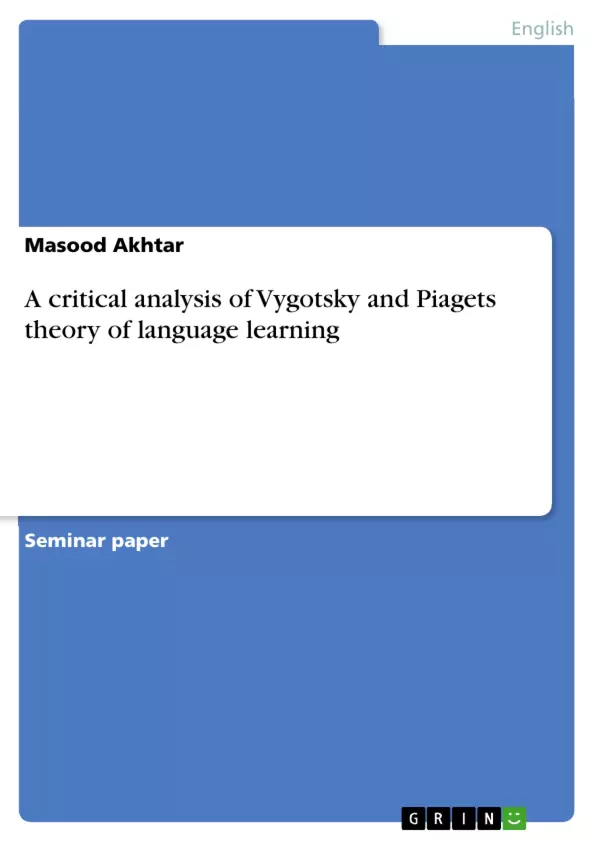Linguists with the collaborations of Psychologists have presented various theories of cognitive development and language learning since the time unknown, these theories have influenced the learners’ learning behavior in a particular area over a specific time when a particular theory was in force. These theories were not only followed but many of them empirical tested and tried which finally allowed the Linguists and Psychologist to impose them, simultaneously some of them were not empirically tested (Krashen’s Monitor Model) but remained in the practice due to their immense worth and importance or reliability among the linguists and educators in the cognitive set up.
Lev Semyonovich Vygotsky (1896 – 1934) and Jean Piaget (1896-1980) were 20th century contemporary philosophers and psychologists, they presented their theories for the child’s cognitive development, however their theories were entirely different and opposite to each other except very little agreement, they exert a tremendous influence over the schooling environment of children. These theories were not only practiced but also remained in force time to time. Vygostky was Russian psychologist who died earlier at the age of 38, due to tuberculoses but he has written more than 100 articles and books, Vygostky’s major work remained in Russian language (until its translations in 1960) but some of the translations are available now, Vygostky wrote about language and thought, cognitive and learning development, psychology of art and educating the students with special needs.
Table of Contents
- Introduction
- Literature Review
- Vygostky's Socio-Cultural Theory
- Piaget's Theory of Cognitive Development
- Conclusion
- Bibliography / References
Objectives and Key Themes
This work critically analyzes the theories of Lev Vygotsky and Jean Piaget regarding cognitive development and language learning. The objective is to compare and contrast their approaches, highlighting their key differences and similarities. The analysis will examine the strengths and weaknesses of each theory, ultimately providing a comprehensive understanding of their contributions to the field of cognitive development.
- The role of social interaction and culture in cognitive development
- The importance of language as a tool for thought and learning
- The stages of cognitive development according to Piaget and Vygotsky
- The concept of the Zone of Proximal Development (ZPD) and its implications for learning
- The application of these theories in educational settings
Chapter Summaries
The first chapter provides an introduction to the theories of Vygotsky and Piaget. It discusses their key ideas and how they have influenced the field of cognitive development and language learning. Chapter two focuses on Vygotsky's socio-cultural theory, delving into his concept of cultural tools, co-constructed processes, and the Zone of Proximal Development (ZPD). It also examines the role of private speech in self-regulation and learning. The chapter concludes by highlighting the implications of Vygotsky's theory for educational practice.
Keywords
This work explores the key concepts and terms related to the theories of Vygotsky and Piaget, including socio-cultural theory, cognitive development, language learning, the Zone of Proximal Development (ZPD), cultural tools, scaffolding, private speech, and co-constructed processes.
- Quote paper
- Masood Akhtar (Author), 2013, A critical analysis of Vygotsky and Piagets theory of language learning, Munich, GRIN Verlag, https://www.grin.com/document/268010



